How to make a hygienic shower
Not all bathrooms allow you to install a bidet, and the level of comfort after appropriate manipulations is completely different. But for those who do not have space to install an additional bowl, there are several different ways to make a hygienic shower for the toilet. Some methods are costly, while others are quite affordable for middle-income families.
The content of the article
What the market has to offer
It is certainly convenient to have a bidet in the bathroom, but not every apartment can install it. But this does not mean that a small bathroom is a reason to refuse such a procedure. There are several different ways to organize the conditions for this procedure:
- Toilet with bidet function. In one case, two devices are combined. To carry out a hygiene procedure, you must press the corresponding buttons, the nozzles will move out. Further, the mechanism of operation is different - somewhere there are buttons, somewhere touch control and sensors that track the presence of a person. Water can be supplied to the built-in mixer (cold and hot), or it can be heated in an internal instantaneous water heater. In general, a very convenient and useful device with a high level of comfort. The only thing that is not at all pleasing is the high prices for this miracle of plumbing (from 60-80 thousand for simple models to 250 thousand for "fancy" ones.
- Toilet cover. You can even organize a hygienic shower for a toilet with a lid. Of course, this is no ordinary cover. It has a water inlet, a built-in water heater and a retractable nozzle. On the side of the lid there is a control panel where the desired temperature is set, the water supply is turned on / off. Unfortunately, the cost of these devices is also far from small - about 60-100 thousand rubles.
- Faucets for hygienic showers. The cheapest way to make a hygienic shower in the toilet is to install a special mixer to which a flexible hose with a nozzle at the end is connected. The water temperature is set on the mixer, the hose is supplied after pressing the lever-button.
All of the above methods are good. But it is the faucet for the hygienic shower that is the most attractive solution. There are models for the installation of which no repairs and complex manipulations are required. You can connect the device to an existing system, or you can put a mixer with a special tap on the sink, to which you can connect a hygienic shower head. We will talk further about the types of these devices and the features of their connection.
Pros and cons over bidet
As for what is more convenient - a pair of toilet bowl + bidet or a hygienic shower for the toilet bowl, there is no need to argue. Everyone decides for himself. Let's take a quick look at the main pros and cons of both devices:
- More space is required to install two bowls - bidet and toilet. You can't argue with this argument, although not everyone has a need to save space.
- When performing an intimate hygiene procedure using a hose and a watering can, you do not need to move from one plumbing fixture to another. This is also an obvious fact.
- When using a shower, it is fixed somewhere on the wall. At the end of use, it may "drip" for some time - the remaining water will drain. This is basically a theoretical possibility, since in practice, with a properly functioning switch, there are no wet spots under the watering can.
- When using a bidet, it is very difficult to forget to turn off the water. If you have a wall-mounted version of a hygienic shower, this is easy to do: there is a double shutdown system - a button / lever on the shower head and a tap on the mixer. You cannot leave the tap open after the procedure. In this case, the flexible hose is under constant pressure, but it is not designed for this, therefore it can break. The situation is different when using the mixer for the sink - it can be seen that water is pouring.
- You can use a flexible hose not only for its intended purpose, but also for other needs. For example, it is convenient to draw water, wash the toilet or cat / dog bowls and trays.
Oddly enough, it is the last fact that is often decisive - an additional bonus in the form of extended functionality is always pleasant. The advantages of showers include the possibility of organizing for relatively little money. But this is about devices with a mixer.
Types of hygienic showers with mixer
According to the installation method, there are two types of mixers for hygienic showers with mixers:
- for the sink;
- wall
- internal installation
- outdoor installation.
Each of these options has pros and cons.
On the sink
If you put a hygienic shower on the sink, installation becomes much easier. All that is needed in this case is to replace the mixer. It has a separate outlet to which a flexible hose with a watering can is connected. All you need to do is install the holder on the wall. The location of the sink is also important in this case. Ideally, you can reach the tap without getting up. Since such models have the following peculiarity of work: first, the tap on the washbasin is turned on, the water temperature is set on it. The water naturally flows into the sink. When you press a button on the shower, the tap is blocked, water flows through the watering can. As soon as the key was released, water poured back into the sink. This is how it works.
Concealed wall mounted
If you have chosen the wall-mounted option, the complexity of installation depends on how you plan to install it. Often there is a niche in the bathroom or toilet, in which all communications are hidden. Often it is located behind the toilet or somewhere nearby. In this case, you can connect the connection there, and install the mixer on the switchboard or come up with some other option.
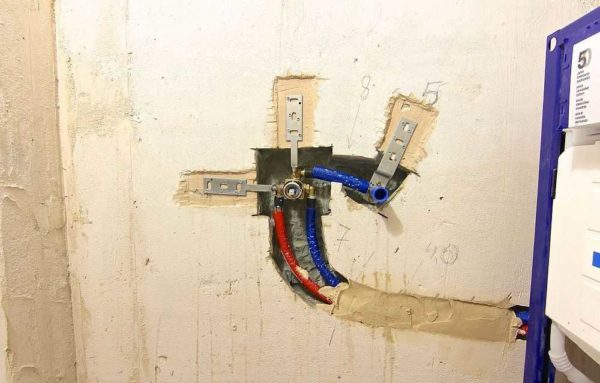
Supply pipes are laid in the wall, a mortgage element is installed, to which the outer part of the mixer is then attached
Regular installation provides for wall slitting, laying hot and cold water supply pipes in the grooves and, at the final stage, installing the mixer itself.
Surface mounted wall (with thermostat)
These are not all varieties. There is also a hygienic shower with a mixer that is connected only to cold water. This does not mean that the procedures are carried out with cold water. It's just that a flow-through electric heater is installed in the body. Such models are only for outdoor installation, since the thermostat cannot be walled into the wall. Connection to water - using a flexible hose, the device itself is attached to the wall with dowels or other suitable fasteners.
The temperature is set on the regulator, it is kept exactly. Only immediately after switching on, you need to wait for a while - a few seconds until the heating element warms up. A very good option for those who do not have hot water in the toilet (or at all). Yes, do not forget that these models require a mains connection.
An interesting installation option without guttering in the next video - the liner is laid over the walls, but closed with a box. It also has a holder for a watering can. It is worth paying attention to those who do not foresee repairs in the toilet or bathroom.
Where to put
The installation height of the toilet shower is almost arbitrary.The only requirement is that the mixer must be installed above the toilet. There are no other restrictions.
The place of installation is absolutely arbitrary, the main criterion is ease of use, which is difficult to achieve in the conditions of small bathrooms. Therefore, we recommend that, before making a final decision, think over everything well and do all the actions with the watering can. This is the only way to be sure that it will be really convenient to use.
Installation features
Specifically, you can only say how to install a hygienic shower for a toilet on the spot. There are too many different nuances that are simply impossible to take into account. The connection principle is simple: supply cold and hot water to the corresponding inlets. That's all. And how to do it, pipes or flexible liners - the choice is yours. Of course, pipes are more reliable, but high-quality flexible hoses in a good braid can serve for years.
There is only one thing to remember. When connecting a hygienic shower to hot and cold water (centralized system), be sure to install ball valves and check valves. Cranes are installed almost always, but check valves are often forgotten.
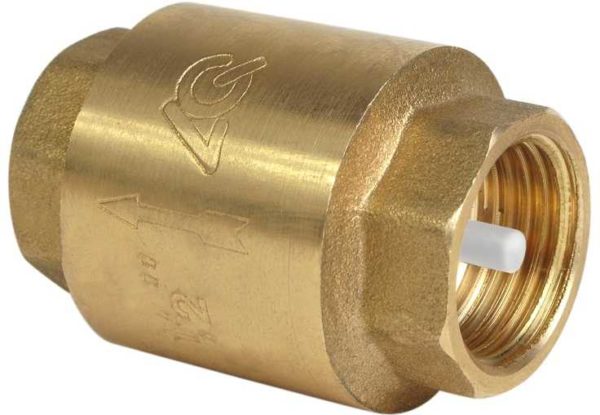
This is a check valve. During installation, unfold so that the arrow on the body coincides with the direction of the water flow
They are needed so that water from the "cold" riser is not mixed into the hot one and vice versa. Usually, the opposite happens - you open cold water, and boiling water flows from there, but there are also opposite cases - hot water periodically becomes not hot at all. This is all because someone on your riser did not put a check valve when connecting a hygienic shower to the toilet. The tap was opened, the shower is not yet used, and through the open mixer water from one riser is mixed into another. Which water goes where depends on where the pressure is higher. Usually higher in hot risers (almost twice), therefore such cases are more common. But mixing with cold is also possible. In general, do not forget to install check valves. They cost mere pennies (compared to the cost of the equipment), and prevent unpleasant situations and proceedings with the operational campaign and "satisfied" neighbors.

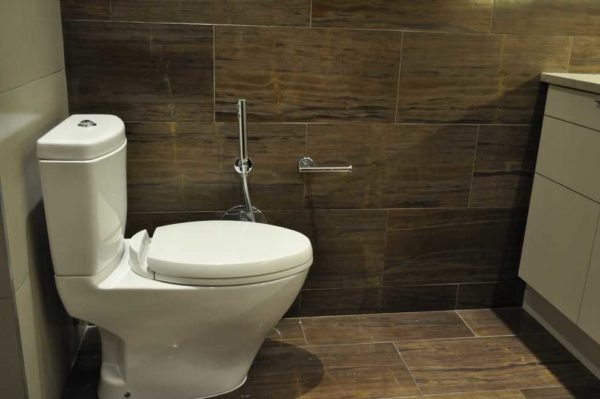
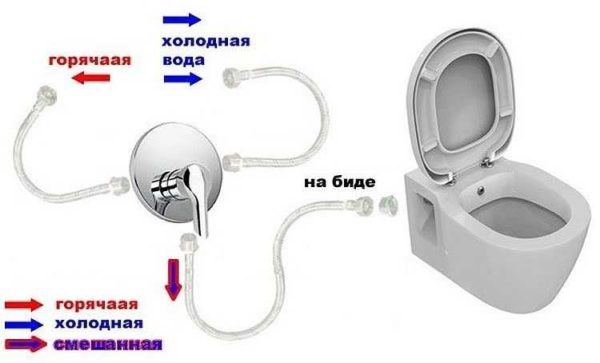
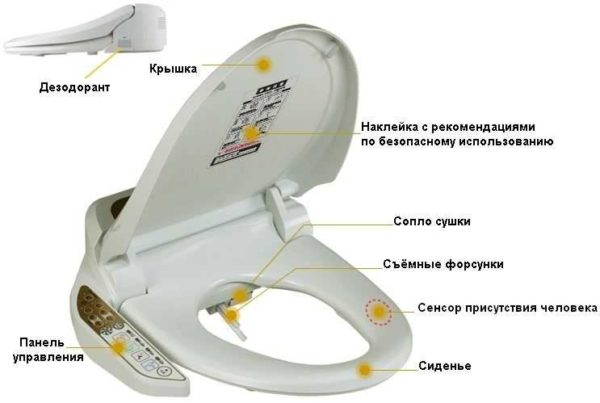
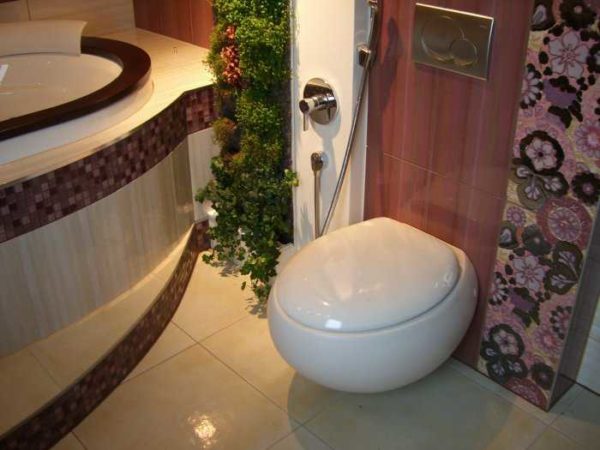
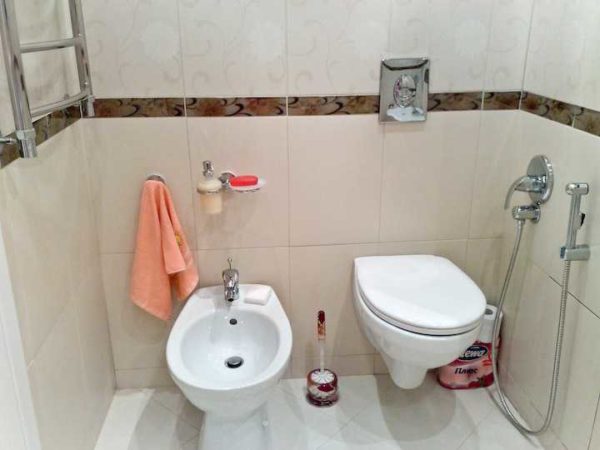
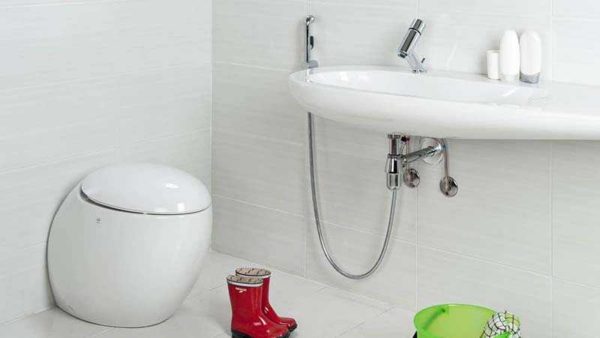
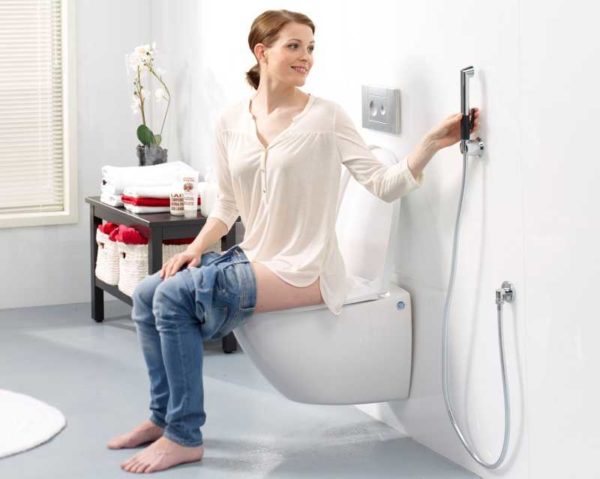
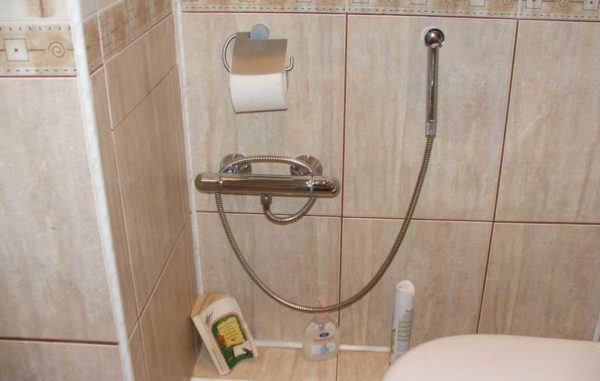
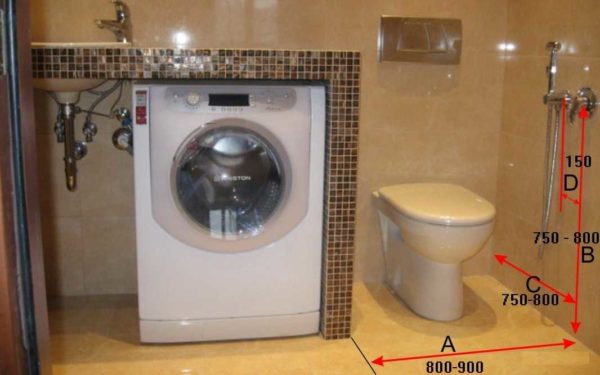
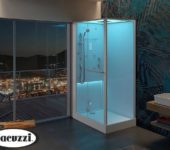
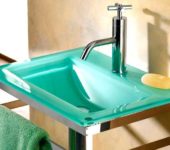
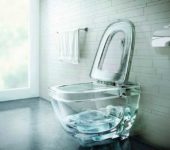
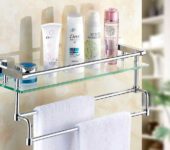
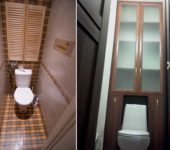





The bidet takes up a lot of space, we decided to install a hygienic shower in a separate toilet. In appearance in the store we liked the shower am pm, just in case we consulted with the consultants, they approved our purchase. Everything was connected without any problems, the shower pressure is excellent. It is a pity that we did not install it earlier)